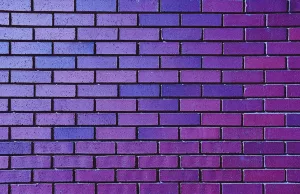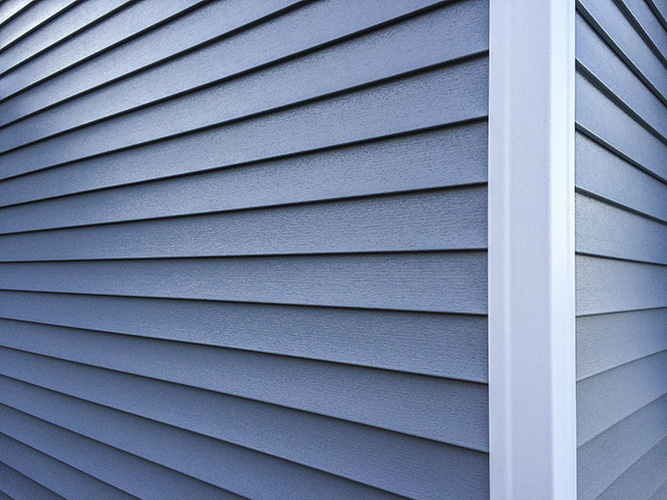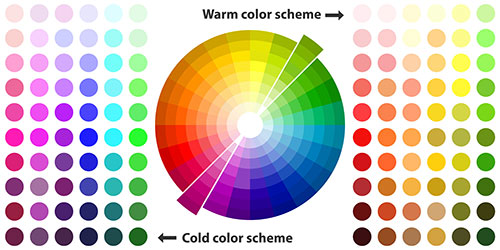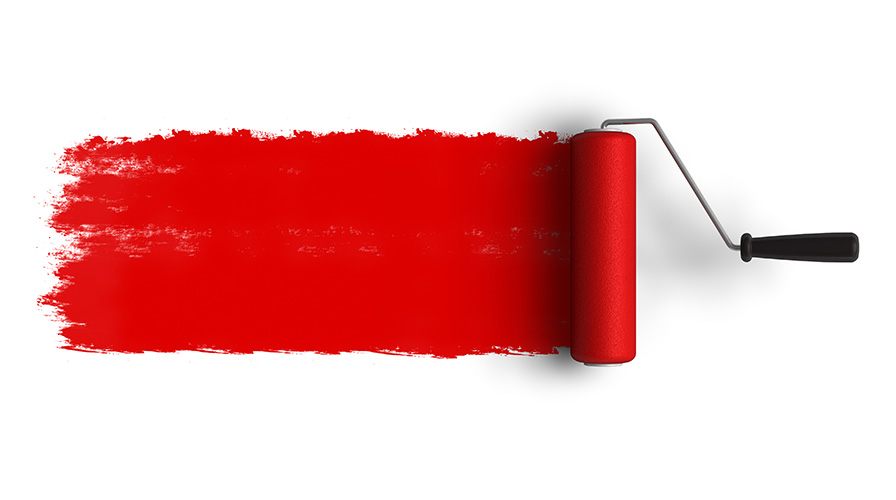Everything You Need to Know About Painting Over Graffiti on Walls
 Graffiti on Walls (Word Count: 1,496 / Read Time: 6 min.)
Graffiti on Walls (Word Count: 1,496 / Read Time: 6 min.)
Any images or lettering painted on public places like buildings, fences, train cars, and overpasses is called graffiti. They are usually made using spray paints and permanent markers. 80% of graffiti is the result of tagging. Another 10% are gang-related, and 5% are artistic.
Graffiti has been increasing over the past few years. Even cameras and warning signs don’t deter the Banksy wannabe. The faster you remove the graffiti, the less likely it is to appear again. Reports say that there is a zero occurrence of the same if removed within 24-28 hours.
But how do you remove graffiti from different surfaces? Unfortunately, the answer is not that simple. It all depends on the type of surface and how long it has been there. This article walks you through the different graffiti removal techniques.
We will be taking an in-depth look into exactly what it takes to paint over graffiti in the following discussions:
- Can I Paint Over Graffiti?
- What Paint Do You Use to Cover Graffiti?
- How to Cover Unwanted Graffiti on Walls
- How to Paint Over Indoor and Outdoor Graffiti
- What is the Best Way to Remove Graffiti Paint from Walls?
- Does Anti-Graffiti Coating Work?
- Conclusion
Can I Paint Over Graffiti?
Painting is one of the easiest and cheapest methods of removal. It also causes the least amount of damage to the surface. Furthermore, repainting allows you to use a glossy enamel which deters further vandalism. It makes it difficult to paint over than a flat finish. However, it may not be easy to get an exact color match unless you have leftover paint lying around from when you first painted.
What Paint Do You Use to Cover Graffiti?
Experts recommend glossy paint with a satin or semi-gloss finish to cover graffiti. The reason being, it resists any marks, even graffiti, than any other finish.
Can You Spray Paint to Cover Graffiti?
Spray paint doesn’t do well in covering graffiti in large areas, and you also run the risk of the graffiti bleeding through. However, if you have small areas that need covering, you can try spray paint.
Best Paint to Cover Graffiti
 Graffiti can be a painful sight, be it your home or outdoors. Here are some paints that provide exceptional coverage and help hide those stains.
Graffiti can be a painful sight, be it your home or outdoors. Here are some paints that provide exceptional coverage and help hide those stains.
- Sherwin-Williams Frazee Paint Graffiti Cover-Up: Water-based paint with a flat finish formulated for exterior graffiti
- Visions Workhorse™ Graffiti Cover-Up: Provides excellent coverage and long-lasting finish
- Zinsser Cover Stain: Primes and seals the affected surfaces and prevents the stains from reappearing
Oil-based paint works the best to cover over graffiti, especially on metal surfaces.
How to Cover Unwanted Graffiti on Walls
There are many ways to remove graffiti from different surfaces. However, the inexpensive method of all is repainting. With proper prep work and paint, you can conceal the graffiti to a large extent.
Here’s how you remove graffiti from surfaces.
Choose the Right Primer
Preparing the surface and priming are the essential steps to a successful paint job. When it comes to graffiti, you need a stain-blocking primer. They absorb the older paint beneath and prevent it from bleeding through the new coat. It is imperative when you are using lighter colors to cover graffiti.
On another note, light color cannot conceal graffiti particularly well. In this case, you may have to remove graffiti before painting. Either pressure-wash it or use chemical solvents to strip the paint.
Choose the Right Paint
Coming to paints, it is better that you choose oil-based glossy paints. It makes it difficult for future graffiti to stick to the wall. Moreover, oil-based paints are durable and generally used on exterior surfaces. Water-based and latex paints are not as durable and can cause graffiti to bleed through. If the graffiti bleeds, use a stain primer-sealer to stop further damage.
Coming to the color, dark colors are the easiest to paint over if you can match the color. It’d be great if you have some old paint on hand. Otherwise, you may have to take samples to the paint store. For lighter base colors, switch to a darker color like brown or black. They are easy to color match if you are in a graffiti-prone area.
Make a note to buy extra paint cans. In case of any future vandalism, you can paint the spot instead of the entire wall.
Surface Preparation
All the surfaces should be clean of dirt or grease since they hinder paint adherence. Use a rag to wash the surface with a mixture of soap and water. In the case of a large surface, a pressure washer should work well. It should be dry completely before you paint.
Primer
The graffiti can bleed and show through the new paint. To prevent this from happening, prime the wall with an even coat of stain-blocking primer. Let it dry for 3-4 hours or according to the manufacturer’s instructions.
Paint Over the Graffiti
For a successful paint job, match the new paint with the base color. Draw a border around the graffiti and paint over it with a brush or a roller. Allow it to dry for 3 – 4 hours in normal drying conditions and paint another coat.
How to Paint Over Indoor and Outdoor Graffiti
When it comes to outdoor graffiti, you need a product that primes and seals at the same time. This prevents the stains from resurfacing on the afresh painted surface. The following method helps to cover up graffiti stains:
Surface Preparation
- Before painting, ensure that the wall is dry completely. It should be free of anything that hinders the adhesion.
- Remove loose and failing material with a stiff bristle brush to a sound edge.
- Use a fine-grade abrasive paper to feather sound edges.
- Ensure that the wall is free of contaminants. Use a mold remover to remove all visible signs of organic growth on the surface. Follow manufacturer’s instructions for a proper application.
- Rinse the surface with clean water to remove any residue.
- Fill in the cracks and small surface defects with a suitable filler. Finally, sand it down to a smooth surface.
- Once the prep is complete, the moisture content of the wall should not be more than 18%.
Priming
- Prime the wall containing the graffiti with a coat of primer.
- Allow it to dry for no less than 2 hours.
Decoration
- Decorate with two full coats of exterior paint to conceal the graffiti. Allow a minimum drying time of two hours. The time between the coats depends on the brand and also the drying conditions.
What is the Best Way to Remove Graffiti Paint from Walls?
The graffiti cleaners and solvents vary depending on the surface. You can buy them from hardware stores or paint stores in your locality. Keep in mind that you need to remove graffiti within 24-48 hours for the products to work.
 Brick and Concrete – Use a heavy-duty paint stripper like the one from Sure Klean to cut through and remove graffiti from any masonry surfaces. The gel consistency of Sure Klean enables it to be applied with roller, brush, or spray equipment. Allow the product to work its magic and use a pressure wash to remove all residue.
Brick and Concrete – Use a heavy-duty paint stripper like the one from Sure Klean to cut through and remove graffiti from any masonry surfaces. The gel consistency of Sure Klean enables it to be applied with roller, brush, or spray equipment. Allow the product to work its magic and use a pressure wash to remove all residue.
Metal – Remove graffiti from metal surfaces with a small amount of paint thinner. If that doesn’t work, use steel wool to scrub it in a gentle manner without scratching the surface.
Glass – Most latex paints need only soap and warm water. Soak them first and then scrape them away.
Plastic – Use a light penetrating oil to remove graffiti. Do not use a thinner as that can soften the plastic surface.
Wood – For unsealed wood use, a power wash to remove graffiti. In the case of sealed wood, you can use mineral spirits.
Does Anti-Graffiti Coating Work?
Anti-graffiti coatings work by preventing the paint from adhering to the surface. They are made of clear polymers that form weak bonds with the substrate. This allows for easy removal.
Once graffiti appears on the surface, you can remove it using a power wash. Unfortunately, the coating also gets removed in the process.
Conclusion
No matter how beautiful graffiti may be, it is still a nuisance since it can attract street delinquency. However, removing it is not an easy task. Depending on the surface and the paint, you would be removing graffiti in different ways. This is because every substrate interacts with the paint differently. However, the easiest of them all is repainting over the graffiti. It also causes the least amount of damage to the substrate.
On the other hand, you may find it challenging to find a color match. Without an exact match, you may end up painting the entire wall. Also, if not appropriately treated, the graffiti can bleed through the new paint.
Here at Wiese Painting, whether it’s removing unwanted graffiti on walls or you want to give your home a fresh new look, we have over 65 years of experience as professional painters. We guarantee that any hard-to-paint color or surface is tackled with professionalism and tricks that have been acquired over the decades. You will love the look of your freshly-painted home or business, so contact us today for your free quote!
 Vinyl siding is a hardened, durable plastic wrapping for your home used for waterproofing and aesthetic reasons. They are low maintenance and can last as long as 40 years if cared for properly.
Vinyl siding is a hardened, durable plastic wrapping for your home used for waterproofing and aesthetic reasons. They are low maintenance and can last as long as 40 years if cared for properly. Autumn Red
Autumn Red Step #6: Apply the Paint
Step #6: Apply the Paint Here at
Here at 








